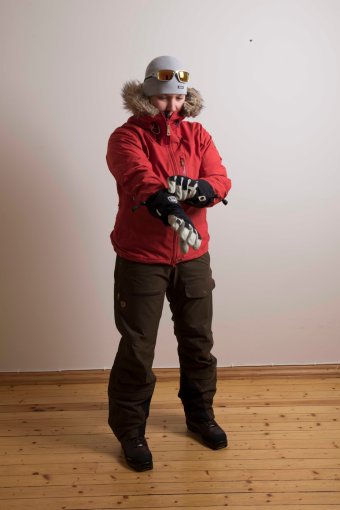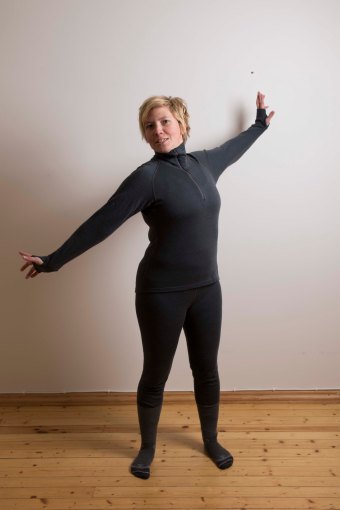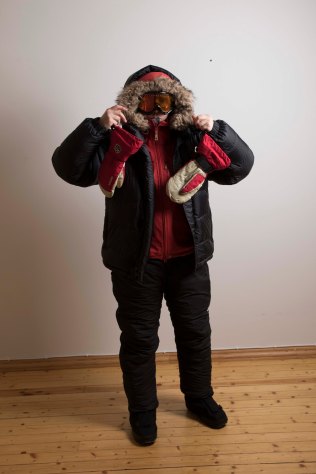
Here are some tips on how to dress for cold weather. It is the layer on layer method that I have applied. I take into account clothes that I have experience of and that I think has worked well in cold weather. I have divided the subject into four main topics:
1) base layer,
2) mid layer,
3) outer shell layer (including accessories) and
4) the outer insulation layer.
Below you’ll find detailed explanations and photos about the different layers.
1) Base layer
The idea of the base layer is to keep you warm and dry. Therefore I use merino wool underwear. The merino wool absorbs moisture without feeling wet on you. Merino has also antibacterial properties, resulting in reduced body odor, so you can wear the garments for multiple days in a row. For winter conditions I use a relatively thick base layer: The Devold Expedition two-layer wool underwear. I like the zip neck model so you can ventilate more easily if it gets too hot. I also use merino on my feet. In the picture I have Lorpen’s Merino Liners as base layer.
2) Mid layer
The mid layer is usually made from fleece or wool. The layer works like an insulation layer. The idea is to keep the warm air close to your body. It’s good if the clothes have a tight fit, because it prevents the air from escaping from your body. I use a Tierra jacket and trousers made from Polartec® fleece material which are great for this purpose. On my feet I have Bridgedale Summit socks, that are designed for cold environments and they are mostly made of wool.
3) Outer shell layer
The outer layer should be wind- and waterproof. It is like a shell for the harsh environment. An important feature for the layer is that it should be breathable, so that the moisture can escape from your inner layers. The garments are often made from Goretex®, or a similar material. Today many clothing brands have their own shell material, that is very similar to Goretex® and have the same features. I use the Fjällräven Eco-Tour Jacket and Trousers. They are made from Fjällrävens own Eco-Shell material. The fabric is made from recycled materials and is 100% free from dangerous fluorocarbons. The hood has a fake fur trim. On my feet I have Crispi Stetind skiing boots that fits the Rottefella NNN BC binding. The boots have Goretex® lining and a water repellent shell to keep your feet dry.
On my head i most often have a fleece beanie. Depending on the temperature I have beanies with different thicknesses. On my hands I have Hestra’s Army Leather Heli Ski gloves. If it gets colder, I use the same glove, but the Mitt model. If it not so windy I have Oakley Polarized sunglasses for eye protection. I use a Buff Original for protecting my neck (not in the picture).

If it gets windy or snowy I use Oakley’s Oframe goggles with mirror lens. I really like the glasses because they don’t get foggy or icy even in the worst weather conditions.

For face cover I use the Arva Face Mask. It is made of comfortable Thermoline® fabric, and doesn’t absorb moisture. It is easy to get on and off with the help of the velcro tape, even if you have your gloves on.
If I want more insulation for my feet I use ski boot covers. They are easy to put on and they are also a great cover for the snow. The boot covers are manufactured by the Finnish company T-Tossu and you can get them here.
4) Outer insulation layer
For extreme colds and also for the breaks it is good to have an insulation layer that you can put on the top of the rest of the layers. In the picture I have Haglöfs Barrier trousers with synthetic insulation and Marmot Greenland Baffled Jacket with down insulation. Here I also have the warmer Hestra Army Heli Ski Mitts.













